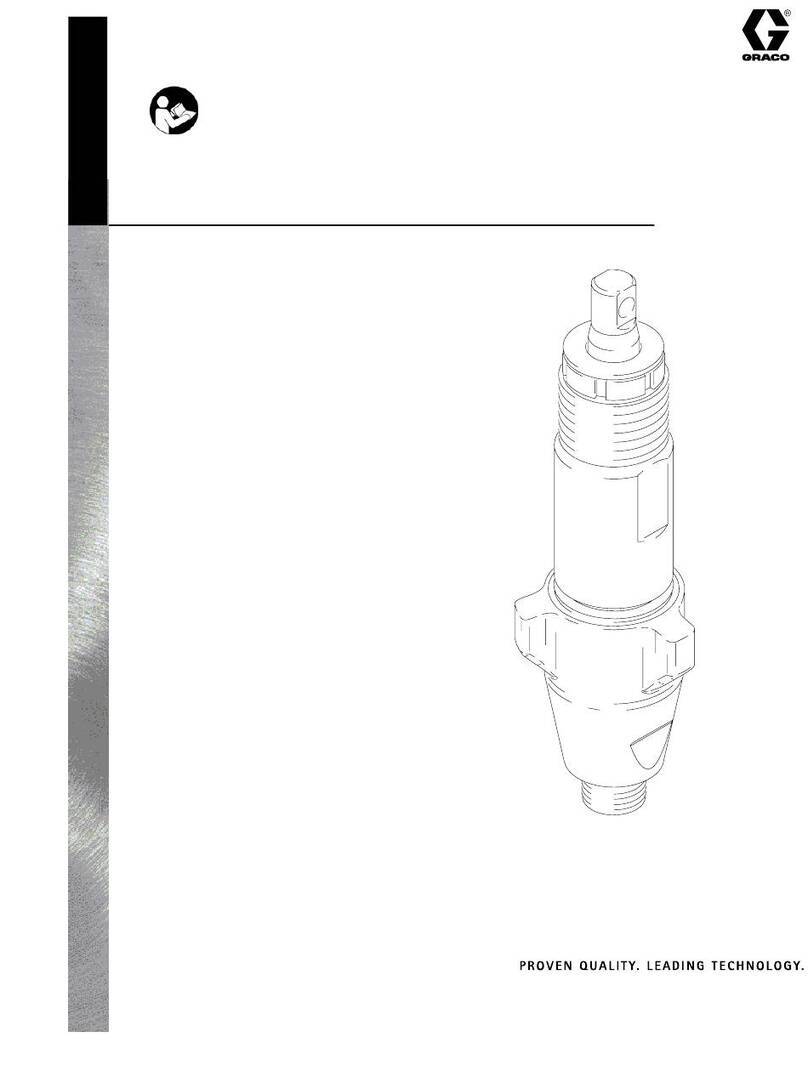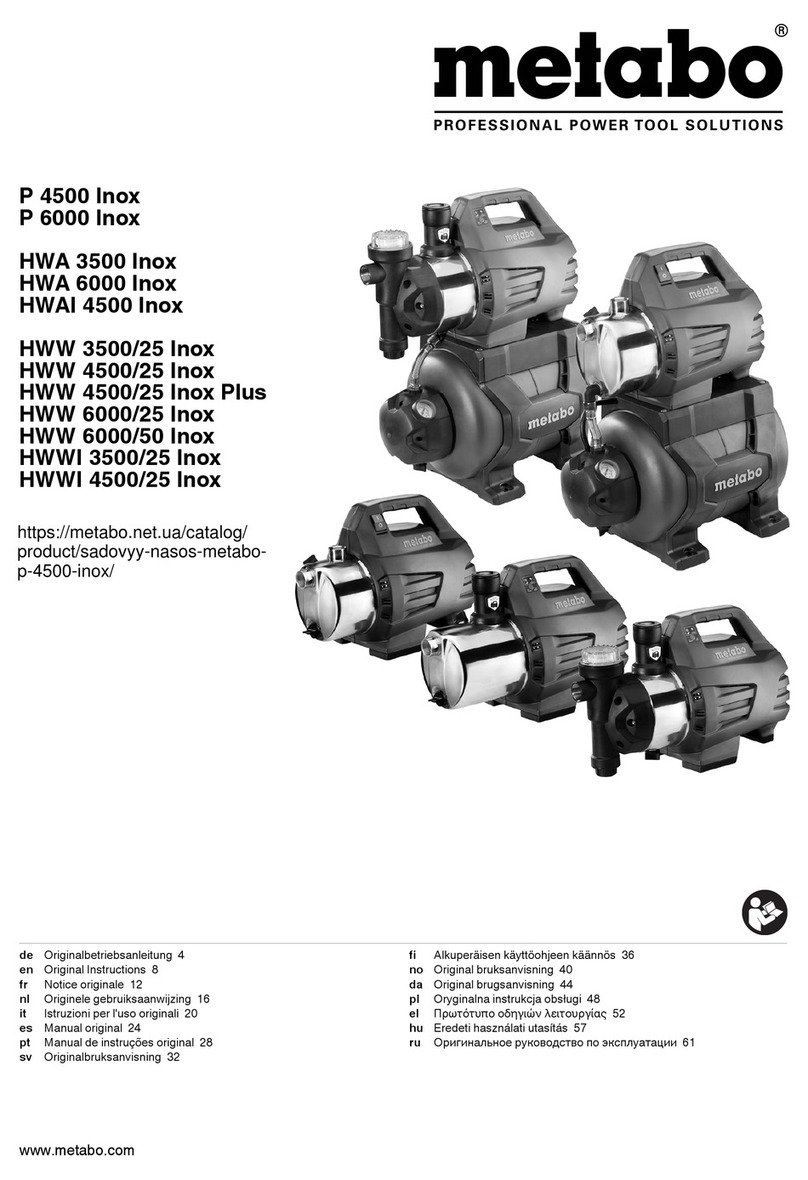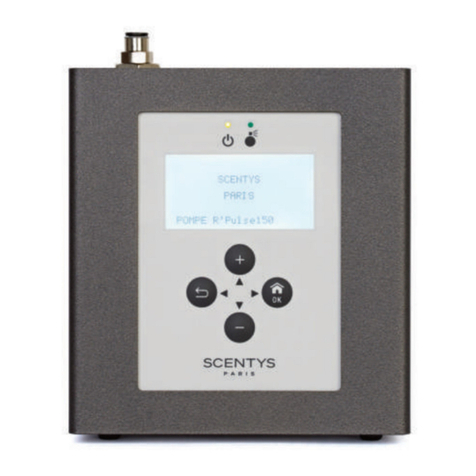Envirotecnics Spill Buddy 3014 User manual

Spill Buddy
Product Recovery System
Operator’s Manual
PN 3014
Teléfono de soporte técnico
Tel: 872 080 542

REVISIONS
REV
DESCRIPTION
INITIALS
DATE
Initial Release
DFB
2/26/14
Envirotecnics Tel: +34 872 080 542 envirotecnics@envirotecnics.com www.envirotecnics.com

i
Spill Buddy Limited Warranty
All references to the customer herein shall mean the Purchaser or the Lessee as
applicable. CLEAN EARTH TECHNOLOGY, INC. (CET) warrants the Spill
Buddy to be free of substantial defects in material and workmanship for one year
from the date of shipment. Pumps are warrantied for 90 days. CET’s sole
responsibility under this warranty shall be to either repair or replace, at its option,
any component which fails during the applicable warranty period because of
defect in workmanship or material. No other liabilities shall be assumed by the
manufacturer or its agents, nor are they expressed or implied.
This warranty is contingent upon proper use of the Spill Buddy by the Customer
in accordance with CET’s published specifications. This warranty shall not be
valid if the alleged defect is the result of abuse, misuse, accident, alteration,
neglect, unauthorized repair, or acts of nature. Any repair shall be deemed
unauthorized unless it is made by CET or with the written consent of CET. This
warranty is the sole warranty made by CET to the Customer and is in lieu of all
other warranties or obligations, expressed or implied.
System upgrades will be made available to customers as they are completed.
Clean Earth Technology, Inc. is not obligated to provide those upgrades without
cost.
WARNING: In the event that equipment is returned to the factory for
any reason, a complete decontamination must be done before
shipment. See page 27 of this manual for the decontamination
procedure. Shipping hazardous materials improperly may be a
Federal offense.
WARNING: Unauthorized user modifications or application beyond
the published specifications may result in electrical shock hazards or
improper operation. Clean Earth Technology, Inc. will not be
responsible for any injuries sustained due to unauthorized equipment
modifications.
Envirotecnics Tel: +34 872 080 542 envirotecnics@envirotecnics.com www.envirotecnics.com

ii
Restrictions and Liabilities
Information in this document is subject to change and does not represent a commitment by
Clean Earth Technology, Inc. Changes made to the information in this document will be
incorporated in new editions of the publication. No responsibility is assumed by Clean Earth
Technology, Inc. for the use or reliability of software or equipment that is not supplied by Clean
Earth Technology, Inc. or by its affiliated dealers.
Safety Considerations
Use of this instrument is restricted to qualified personnel who recognize shock hazards and are
familiar with safety precautions used when operating electrical equipment. Read the manual
carefully before operating the Spill Buddy.
The following warnings and informational symbols may be found on the Spill Buddy and/or in
this manual:
Symbol
Description
Caution: Risk of electric shock
Direct / Alternating Current
Direct Current
Alternating Current
Protective Earth (ground)
Warning: Refer to accompanying documentation
Off (Power: disconnection from Mains)
On (Power: Connection to Mains)
Envirotecnics Tel: +34 872 080 542 envirotecnics@envirotecnics.com www.envirotecnics.com

iii
Hazard Warnings
Warning! Explosive Vapors. The Spill Buddy is not an explosion proof device.
Its use within a classified area requires monitoring of the work site to insure
explosive vapors are not present. The probe is designed to operate in an
explosive atmosphere, i.e. a recovery well. The reel body and recovery container
should be positioned outside of any classified hazardous area. CET
recommends maintaining a distance of three (3) feet or greater from the wellhead
during use.
Warning! Never leave the Spill Buddy operating unattended during recovery
events. This devise is not intended to for use without an operator present.
Warning! Risk of Grounding Arc! This device is designed to dissipate
potential static charge through its base grounding plate. Never operate this
device while it is not in contact with the ground. Portable product containers
must also be set on the ground with the discharge tube clamp connected to the
container. The clamp is electrically connected to the reel assembly.
Warning! Insure the Pump Flooding Procedure has been performed prior to
use, see page __.
Warning! Chemical Incompatibility. Do not use this device to pump any
Halogenated Hydrocarbon (HHC) solvent containing the following elements:
(Examples are not all inclusive)
Flourine (f) “-flour-“i.e. Dichloroflouromethane, Trichlorofiouromethane
Bromine (Br) “-bromo-“i.e. Methyl bromine, Ethylene dibromide
Chlorine (Cl) “-chloro-“i.e. Perchloroethylene, Trichloroehtane, Dichloromethane
Iodine (I) “-iodi-“i.e. N-butyl Iodide, Methyl Iodide
Failure to heed this warning may result in severe system damage, personnel injury,
and/or site damage.
CET recommends that any chemicals of concern (COC) be disclosed at the time of
quote requests and when a system is moved from its original site to another COC site.
Precautions
The following precautions are provided to help you avoid damaging the system:
Caution: Service. Only authorized service personnel should service the Spill Buddy.
Only qualified technical personnel should perform troubleshooting and service
procedures on internal components. Call the factory at 802-425-3710 if you believe
the Spill Buddy requires servicing beyond normal maintenance procedures.
Caution: Site Security. Access to the site and to the Spill Buddy must be controlled
at all times. The equipment is specialized and must only be operated by qualified
and trained personnel. Clean Earth Technology does not warranty damage to
Envirotecnics Tel: +34 872 080 542 envirotecnics@envirotecnics.com www.envirotecnics.com

iv
equipment due to vandalism or negligence.
Caution: Regular Maintenance. The down-well probe and pump should be regularly
inspected and maintained, as detailed in Chapter 2, page 13.The frequency of
maintenance will depend on your site conditions. Failure to provide regular
maintenance will damage your Spill Buddy and may result in unsafe operating
conditions. Clean Earth Technology is not responsible for damage to equipment or
injury to personnel resulting from improper maintenance practices.
Clean Earth Technology, Inc.
Environmental Equipment Return Policy
This policy refers to ANY EQUIPMENT OR PARTS being returned to Clean Earth Technology,
Inc. (CET), whether:
Customer owned, leased, or rented.
In warranty or out of warranty
NO equipment or parts should be shipped to CET without first contacting our service
department for a Return Material Authorization number (RMA). Contact our service department
at (802) 425-3710 to be assigned an RMA number.
CET reserves the right to refuse delivery of any equipment without a CET RMA number
clearly displayed on the exterior of the package(s).
CET reserves the right to refuse delivery of any equipment improperly decontaminated.
CET reserves the right to add a fee of $500.00 to the repair invoice of any equipment or
parts not decontaminated to the satisfaction of CET.
The policy below applies to both equipment sales and repair orders. For a Return
Material Authorization number, please call our Service Department. (802) 425-3710
Envirotecnics Tel: +34 872 080 542 envirotecnics@envirotecnics.com www.envirotecnics.com

v
Environmental Equipment Return Guidelines
All equipment must be thoroughly cleaned, purged of product and decontaminated prior
to shipment to CET. NOTE: CET recommends the use of Personal Protective
Equipment, level C or D, as defined in OSHA 29 CFR 1910.120.
CAREFULLY FOLLOW THE EQUIPMENT DECONTAMINATION PROCEDURES
FOUND ON PAGE 27 OF THIS MANUAL
Any equipment or parts shipped to CET must include the following documentation:
CET RMA/Repair Order form completed by customer. An “RMA number/REPAIR ORDER” form
to copy is found on page 31.
Description/name of product pumped.
Reason for return.
The CET RMA number clearly marked on the outside of ALL packages and paperwork.
All items being returned (including all warranty-claim shipments) must be sent freight prepaid to
our factory location:
Clean Earth Technology, Inc.
445 Long Point Road
N. Ferrisburgh, VT. 05473
When you ship an item to CET, we recommend using UPS, FedEx, or another reputable
shipper. We also recommend that you insure your shipment for its actual replacement cost.
Clean Earth Technology will not be responsible for lost shipments or instruments that are
received in damaged condition due to improper packaging or handling.
Use the original carton and packaging material for shipment. If they are not available, we
recommend the following guide for repackaging:
Use a double walled carton of sufficient strength for the weight being shipped.
Use sufficient industry approved, shock-absorbent packing material to protect all
surfaces and projecting parts. The items packed should not be able to slide or shift their
position within the box.
Envirotecnics Tel: +34 872 080 542 envirotecnics@envirotecnics.com www.envirotecnics.com

CONTENTS
Spill Buddy Limited Warranty .................................................................................................. i
Restrictions and Liabilities...................................................................................................... ii
Safety Considerations .............................................................................................................ii
Hazard Warnings....................................................................................................................iii
Precautions............................................................................................................................iii
Environmental Equipment Return Policy...............................................................................iv
Environmental Equipment Return Guidelines ..........................................................................v
Product Introduction................................................................................................................ 1
Intrinsic Safety 101................................................................................................................. 5
Flammability and Combustible Liquids Definitions 101.................................................... 5
Chapter 1- System Operation.................................................................................................. 7
Pump Flooding Procedure...................................................................................................... 8
Using the Spill Buddy to Pump LNAPLS (Floaters)................................................................. 9
Using the Spill Buddy to Pump DNAPLS (Sinkers)................................................................11
Chapter 2- Maintenance Operations......................................................................................13
Removing Moisture from the Pump .......................................................................................13
Field Shutdown Procedure ....................................................................................................14
Shop Cleaning Procedure......................................................................................................14
Cleaning the Probe................................................................................................................14
How To Remove the Pump....................................................................................................16
Pump Maintenance................................................................................................................18
How to Install/Reinstall the Pump..........................................................................................19
Battery Maintenance and Charging .......................................................................................20
Chapter 3- Troubleshooting...................................................................................................23
Chapter 4- System Specifications..........................................................................................25
Chapter 5- Equipment Decontamination Procedures...........................................................27
Chapter 6- Equipment Return Policy.....................................................................................29
Return Materials Authorization Form ....................................................................................31
Envirotecnics Tel: +34 872 080 542 envirotecnics@envirotecnics.com www.envirotecnics.com

1
Product Introduction
The Spill Buddy is a compact, manually
operated product skimming tool based on
proven Spill Buster technology. The Spill
Buddy is designed to be operated on site to
determine the location of the product/water
interface and skim small quantities of product
or water from recovery wells as small as 2” in
diameter.
The Spill Buddy is designed to effectively
pump products (both LNAPLs and DNAPLs)
with viscosities up to about 10-12 centipoise.
The Spill Buddy consists of a reel outfitted
with a down-well probe that is manually
lowered and raised by the operator. The
down-well probe comes in two lengths: 50 ft. and 100 ft. The Probe is connected inside the reel
to 10 ft. of Product Discharge Tubing with a combination valve and support clamp/ground,
located at the rear of the reel which can be attached to various types of recovered product
containers.
The 1.93” diameter Probe contains the patented ALPHA ARRAY™
interface sensors, as well as a small but powerful 12vdc electric
product pump. An audible feedback enables the user to keep the
pump positioned in the product layer, resulting in product skimming
without also pumping water.
The rugged, lightweight, and convenient Spill Buddy can
skim up to 0.7 gallons of product per minute. Spill Buddy
also has a self-contained, rechargeable battery for the
sensor electronics and pump. The battery is rechargeable
from a 12 VDC source. A wall transformer is provided
with the unit; or an optional cigarette lighter adapter may
be purchased that enables the Spill Buddy to be charged
by a vehicle, as well as an optional battery cable to
charge directly from your vehicle’s battery. Spill Buddy
can operate for up to one hour of continuous pumping
(approx. 40 gallons) per charge, depending on the
viscosity of the product being pumped.
“Exploded” view of the Probe showing
the pump, filter, spring and end cap
Envirotecnics Tel: +34 872 080 542 envirotecnics@envirotecnics.com www.envirotecnics.com

2
NOTE: For maximum performance, allow the Spill Buddy’s battery to charge
overnight before use.
Alpha Array Sensor Band Location
There is an array of sensor bands, internal to
the probe, including one dispensing a high
limit signal. The sensor usesa low
frequency, omni-directional signal to sense
the product/water interface. The sensor
operateson the principle that signal
transmission varies significantly due to the
transmission characteristics of the type of
fluid surrounding the antenna. The variation
in signal transmission is used to accurately
determine the interface location relative to the product inlet. The sensor is constructed of “state
of the art” polymer materials for corrosion resistance and long life.
The Front Panel of the Reel includes the System Power ON/OFF switch, the Pump ON push
button switch (momentary), the pump ON toggle switch (constant) and the Battery Charging
Jack.
Battery Access
Cover
Recharging Jack
Winding Knob
Pump Push Button
Switch (momentary)
Pump Toggle Switch
(constant)
System Power Switch
Spill Buddy Front Panel
`
ALPHA ARRAY™
SENSOR BAND AREA
Envirotecnics Tel: +34 872 080 542 envirotecnics@envirotecnics.com www.envirotecnics.com

3
Discharge
Tubing
Discharge Valve
and Spring Clamp/ Grounding
Assembly
Spill Buddy- Back View
Operator Safety
The National Electric Codes (NEC) does not certify portable electrical systems such as the Spill
Buddy. However, Clean Earth Technology has used the NEC as a guideline for the Spill
Buddy’s design, developing the operating instructions, and in our definitions of classified areas.
Please note that what we have written here is not meant to supersede anything that may be
written in detail in the NEC codes or applicable local codes. It is your responsibility and the
responsibility of the Authority Having Jurisdiction to study and follow these codes.
The Spill Buddy’s probe is designed to operate in a recovery well, which is a Class 1, Div 1
area, whereas the reel itself is not rated for use in a classified area. Therefore, it is important to
understand and follow the instructions in this manual for using the Spill Buddy in a manner
consistent with safe practices. Make certain that you have read the Hazard Warnings section
on page iii, as well as other notes and warnings written throughout the manual and the safety
labels located on the Spill Buddy itself.
Since this is such an important topic, in the next section we will present a few basics to help you
or your customers understand the meaning of the various terms defining safe use when
operating our equipment.
Envirotecnics Tel: +34 872 080 542 envirotecnics@envirotecnics.com www.envirotecnics.com

5
Intrinsic Safety 101
Intrinsic safety (IS) is a protection technique for safe operation of electrical equipment in
hazardous areas by limiting the energy available for ignition of explosive well gases. The
concept of (IS) circuits was originally driven by some devastating coal mine explosions in
Europe due to “firedamp” gases being ignited by “electrical shorts” in the wiring of early
communication devices such as the electric telegraph.
In signal and control circuits that can operate with low currents and voltages, the intrinsic safety
approach simplifies circuits and reduces installation costs over other protection methods. High-
power circuits such as electric motors or lighting cannot use intrinsic safety methods for
protection.
Approval standards for intrinsic safety barriers require that the barrier maintains only approved
levels of voltage and current flowing out to the specified components located in a classified
area. This is accomplished by preventing ignition of the protected device, and also by stopping
any ignition level sparking of damaged wiring to the protected components.
Many safety barriers are commercially available and may utilize a buss fuse, one or more
resistors, and one or more Zener diodes. These devices are certified and provided in a package
form where they can be easily inserted mechanically and electrically in the circuit branch going
into a classified area.
An example of an Intrinsically Safe (IS) certified Zener barrier is shown
here. Signals going to an electrical device located in a classified zone
are wired into one end of the modular barrier and then wired out into the
classified zone. These can be purchased off the shelf and are certified
Intrinsically Safe by various 3rd body testing laboratories.
We have utilized a certified Zener barrier such as this in the Spill
Buddy’s sensor circuits.
Flammability and Combustible Liquids Definitions 101
When using a Spill Buddy system it is important to understand the difference between the
definition of flammable liquids and combustible liquids. All flammable and combustible liquids
will vaporize into flammable gases at certain temperatures and pressures. The temperature
point at which a liquid turns to a gas vapor is referred to as the “flashpoint” of the liquid. The
determination of the flashpoint for each flammable or combustible liquid is done by performing
what is commonly known as the “closed cup” flashpoint test.
It should be mentioned that flashpoint was selected as the basis for classification of flammable
and combustible liquids because it is directly related to a liquid's ability to generate vapor, i.e.,
its volatility. Since it is the vapor of the liquid, not the liquid itself that burns, vapor
generation becomes the primary factor in determining the fire or explosive hazard.
Furthermore, the liquid’s vapor pressure is an important factor and is a measure of a liquid's
propensity to evaporate. The higher the vapor pressure, the more volatile the liquid and, thus,
the more readily the liquid gives off flammable or explosive vapors.
Envirotecnics Tel: +34 872 080 542 envirotecnics@envirotecnics.com www.envirotecnics.com

6
Clean Earth Technology has designed the Pump Flooding procedure described on page 8 to
mitigate the risk of vapor ignition in flammable liquids recovered by the Spill Buddy.
The results of flashpoint testing have been used to help regulating bodies determine the
temperatures at which potentially combustible liquids turn into a vapor, creating a flammable or
explosive gas.
Hazardous locations are further defined by means of the class/division system and have been
formulated by the NEC, CSA, OSHA, and the National Fire Protection Association (NFPA).
These definitions are as follows:
Flammable Liquids
Flammable fluids are defined as liquids having closed cup flash points below 100°F
(37°C). Flammable liquids are referred to as Class I liquids.
◆A class IA flammable liquid is a liquid with a flashpoint below 73ºF (22.8ºC) and a boiling
point below 100ºF (37.8ºC). An example of a class IA liquid is n-pentane, since its flashpoint
and boiling point are 56ºF (49ºC) and 97ºF (36ºC), respectively.
◆A class IB flammable liquid is a liquid with a flashpoint below 73ºF (22.8ºC) and a boiling
point at or above 100ºF (37.8ºC). An example of a class IB liquid is acetone, since
its flashpoint and boiling point are 0ºF (18ºC) and 133ºF (56ºC), respectively.
◆A class IC flammable liquid is a liquid with a flashpoint at or above 73ºF (22.8ºC) and
below 100ºF (37.8ºC). An example of a class IC liquid is turpentine, since its flashpoint
lies in the range from 95 to 102ºF (35 to 39ºC).
Combustible Liquids
Combustible fluids are defined as liquids having closed cup flash points at or above
100°F (37°C). Combustible liquids are referred to as Class II or Class III liquids.
◆Class II liquids - flash points at or above 100°F (37.8°C) and below 140°F (60°C).
◆Class IIIA liquids - flash points at or above 140°F (60°C) and below 200°F (93.4°C). c.
◆Class IIIB liquids - flash points at or above 200°F (93.4°C).
An example of a Combustible liquid is the Lamplight® Ultra Pure Red Paraffin Lamp Oil that
CET uses for testing new and repaired units before shipment. This material has a flashpoint of
250F (121C) making it a class III liquid. Furthermore, its low toxicity makes it a safe testing fluid
due to its high ignition temperature and the lack of chemicals that are listed in the CERCLA
Hazardous Substance list. CET uses a red colored fluid but it also can be found in clear, or
colored green or blue.
This fluid is easily found and can also be used as a pump flooding fluid as defined on page 8.
Envirotecnics Tel: +34 872 080 542 envirotecnics@envirotecnics.com www.envirotecnics.com

7
NOTE: Personal Protective Equipment, Level C or D, as defined in OSHA 29 CFR
1910.120, shall be worn as a minimum while operating or cleaning the Spill Buddy unit.
A suitable container should be used to contain product.
Chapter 1- System Operation
STANDARD EQUIPMENT LIST:
Spill Buddy, 50 ft. or 100 ft., as ordered, with battery installed
Battery wall charger
Pump Fill Kit
Pump Removal Tool
Operator’s Manual
Optional Items:
Roller with well head adapter
Cigarette lighter adapter battery charger
Battery charger cable with battery “alligator”clips
Additional product pumps
Extra battery
Warning! Explosive Vapors. The Spill Buddy is not an explosion proof device.
Its use within a classified area requires monitoring of the work site to insure
explosive vapors are not present. The AHJ may require a valid HOT WORK
permit, with testing of the LEL and HEL at intervals. The probe is designed to operate in
an explosive atmosphere, i.e. a recovery well. The reel body and recovery container
should be positioned outside of any classified hazardous area. CET recommends
maintaining a distance of three (3) feet or greater from the wellhead during use.
Warning! Never leave the Spill Buddy operating unattended during recovery
events. This devise is not intended to for use without an operator present.
Warning! Risk of Grounding Arc! This device is designed to dissipate
potential static charge through its base grounding plate. Never operate this
device while it is not in contact with the ground. Portable product containers
must also be set on the ground with the discharge tube clamp connected to the
container. The clamp is electrically connected to the reel assembly.
Warning! Insure the Pump Flooding Procedure has been performed prior to
use, see page 8.
Envirotecnics Tel: +34 872 080 542 envirotecnics@envirotecnics.com www.envirotecnics.com

8
Pump Flooding Procedure
Before the Spill Buddy Probe can be lowered down a well, the pump must be flooded with a
non-flammable fluid. (See page 6 for the definitions of flammable versus combustible liquids.)
The purpose of this procedure is to displace oxygen and vapors from within the pump body.
Once the Probe begins pumping product from the well, the added fluid will be pumped out to the
recovery container during the first recovery cycle. Note: CET does not ship new or serviced
systems with the pump pre-flooded.
Required Equipment:
A suction device, such as syringe pictured at right.
NOTE: If purchasing device separately, any O-ring
included should be replaced with a Viton ® O-ring to
prevent swelling.
Suitable container for the fluid
Approximately 8 fl oz of flooding fluid, such as Ultra-
Pure Paraffin Lamp Oil, mineral oil, or similar non
flammable fluid. DO NOT USE WATER, the pump
internals are NOT corrosion resistant.
Approximately 12”of 3/8 fuel line
A product pump, CET P/N 90-1318-019
Flood the pump
Attach the fuel line to the discharge side of the pump.
Attach the other end of the fuel line to the suction
device.
Place the pump inlet in the container of fluid.
Pull the fluid into the pump until it is observed in the fuel line.
Remove the fuel line from the pump.
Install (or re-install) the flooded pump into the Probe (reference the “Pump Installation”
section of the Maintenance Operations chapter of the Operator’s Manual).
If the pump is not immediately installed in the Probe, replace the red intake and
discharge caps. The pump can then be bagged for later use or storage.
Note: Always save the red caps from installed pumps for future use.
Once the flooded pump has been replaced in the Probe (See “Pump Installation” on page19),
you are ready to begin operating the Spill Buddy.
Envirotecnics Tel: +34 872 080 542 envirotecnics@envirotecnics.com www.envirotecnics.com

9
Warning! Explosive Vapors. The Spill Buddy is not an explosion proof device. Its use
within a classified area requires monitoring of the work site to insure explosive vapors
are not present. The AHJ may require a valid HOT WORK permit, with testing of the
LEL and HEL at intervals. The probe is designed to operate in an explosive
atmosphere, i.e. a recovery well. The reel body and recovery container should be
positioned outside of any classified hazardous area. CET recommends maintaining a
distance of three (3) feet or greater from the wellhead during use.
NOTE: Always perform the Pump Flooding procedure found on page 8 before lowering
the Probe into the well.
Using the Spill Buddy to Pump LNAPLS (Floaters)
1) For operation compliant with standard safety
practices, always use a roller (grooved wheel or
pulley) mounted on the well head to enable the
operator to lower the Spill Buddy’s probe down the
well from a distance at least three feet away. You
can order a roller and well head adapter from
Clean Earth Technology, or else supply your own.
2) Place the roller and adapter
on the well head
3) To recover product, clip discharge tube end to the
product discharge container and open the petcock. LNAPL
or DNAPL product can be pumped out of the well and into
the open Container. NOTE: The container should be
located 3 feet or more from the reel body.
4)Perform the Pump Flooding Procedure on page 8.
5) Remove the probe from its receptacle and rest it carefully over the roller.
Start to lower the probe by unreeling it into the well (use caution to avoid
scraping the tubing on sharp edges).
6)Once the operator and any other
personnel present are located at least three
feet from the well head, turn the unit on
using the SYSTEM POWER switch on the
Front Panel (See page 2). Spill Buddy will
respond with one beep every three seconds,
which indicates that the unit is ON, and the
battery is charged and functional.
Rollers mounted to well head adapters for
a two inch well and a four inch well.
Envirotecnics Tel: +34 872 080 542 envirotecnics@envirotecnics.com www.envirotecnics.com

10
WARNING: Always position the product recovery container more than 3 feet (1 Meter)
from the Spill Buddy reel.
7)Continue to lower the probe slowly into the well. When the Probe ALPHA-ARRAYTM sensor
contacts water, Spill Buddy will respond with a continuous beep.
8) To recover product raise the depth of the probe to a point just above the product/water
interface. (The continuous tone changes to one beep every three seconds). In the case of a
DNAPLE product when the solid tone stops then the pump intake is in the DNAPL product and
the pump can be turned on to recover product.
Press the push button (momentary) PUMP ON switch or flip the PUMP ON toggle switch
(constant) for continuous operation. Both switches are located on the Front Panel.
Use “fishing” motion. Once the tone changes from one beep/three seconds to continuous,
release the pump switch or raise the probe so that the water will not be pumped into the
discharge.
9)As water recharges the well, the interface level may change. To avoid pumping water, it is
recommended that the operator continue the “fishing” motion to reestablish the interface level,
then find product and restart the pump. Repeat this process several times to pump off the
maximum amount of product.
NOTES:
a) The pump will operate as long as the constant PUMP toggle switch is in the ON position. Spill
Buddy will pump water or product depending upon the elevation of the probe in the well relative
to the product/water interface. The operator selects the fluid to be pumped by listening to the
tones. The pump will not automatically turn itself off when it senses water.
b) If, during the course of the day, the pumping rate slows down, check the filter screen first.
Use large adsorbent pad to wrap probe between wells to prevent spillage.
Envirotecnics Tel: +34 872 080 542 envirotecnics@envirotecnics.com www.envirotecnics.com

11
NOTE: Always perform the Pump Flooding procedure found on page 8 before lowering
the Probe into the well.
Warning! Explosive Vapors. The Spill Buddy is not an explosion proof device. Its use
within a classified area requires monitoring of the work site to insure explosive vapors
are not present. The AHJ may require a valid HOT WORK permit, with testing of the
LEL and HEL at intervals. The probe is designed to operate in an explosive
atmosphere, i.e. a recovery well. The reel body and recovery container should be
positioned outside of any classified hazardous area. CET recommends maintaining a
distance of three (3) feet or greater from the wellhead during use.
Using the Spill Buddy to Pump DNAPLS (Sinkers)
1) For operation compliant with standard safety practices, always use a roller (grooved wheel or
pulley) mounted on the well head to enable the operator to lower the Spill Buddy’s probe down
the well from a distance at least three feet away. You can order a roller and well head adapter
from Clean Earth Technology, or else supply your own.
2) Place the roller and adapter on the well head
3) Perform the Pump Flooding Procedure on
Page 8.
4) To recover product, clip discharge tube end to the
product discharge container and open the petcock.
LNAPL or DNAPL product can be pumped out of the
well and into the open Container. NOTE: The
container should be located 3 feet or more from the
reel body.
5) Remove the probe from its receptacle and rest it carefully over the
roller. Start to lower the probe by unreeling it into the well (use caution
to avoid scraping the tubing on sharp edges).
6) Once the operator and any other
personnel present are located at
least three feet from the well head,
turn the unit on using the SYSTEM
POWER switch on the Front Panel
(See page 2). Spill Buddy will
respond with one beep every three
seconds, which indicates that the
unit is ON, and the battery is
charged and functional.
Envirotecnics Tel: +34 872 080 542 envirotecnics@envirotecnics.com www.envirotecnics.com

12
WARNING: Always position the product recovery container more than 3 feet (1 Meter)
from the Spill Buddy reel.
7) Continue to lower the probe slowly into the well. When the Probe ALPHA-ARRAYTM sensor
contacts water, Spill Buddy will respond with a continuous beep. Product can be pumped out of
the well by the following procedure: lower the Probe down through the water to reach the
product. When the probe sensor contacts the DNAPL, Spill Buddy will respond with one beep
every three seconds.
8) Press the push button (momentary) PUMP ON switch or flip the PUMP ON toggle switch
(constant) for continuous operation. Both switches are located on the Front Panel. The exact
level of the ground water/DNAPL interface may change as the product is being pumped off,
requiring the Probe to be lowered slightly. Keep Probe off the bottom of the well to avoid
pumping silt-laden product.
CAUTION: If the well contains both floating product and DNAPLS, pump off both
products as described above, but into separate containers for appropriate disposal.
NOTES:
a) The pump will operate as long as the constant PUMP toggle switch is in the ON position. Spill
Buddy will pump water or product depending upon the elevation of the probe in the well relative
to the product/water interface. The operator selects the fluid to be pumped by listening to the
tones. The pump will not automatically turn itself off when it senses water.
b) If, during the course of the day, the pumping rate slows down, check the filter screen first.
Use large adsorbent pad to wrap probe between wells to prevent spillage.
Envirotecnics Tel: +34 872 080 542 envirotecnics@envirotecnics.com www.envirotecnics.com

13
Chapter 2- Maintenance Operations
Removing Moisture from the Pump
The most essential maintenance operation for the Spill Buddy is removal of all moisture from the
pump at the end of each day’s use. Since the pump shutoff is a manual operation, some
amount of water is inevitably pulled into the pump during operation. Allowing any amount of
water to remain in the pump motor WILL damage the pump, even if only for a short period of
time. Moisture must be displaced from the pump motor even if the unit has not been
used to pump water. Displacing moisture can be accomplished by following these simple
procedures:
1. Place the Probe in a container of pure Lamp Oil, so that the pump intake is fully submersed in
product. Make certain there is no water in the container.
2. Activate the pump, by using the toggle switch or large blue button, on the side of the Spill
Buddy. Run pump for at least two seconds. This will ensure that an adequate amount of
product flows through the pump motor, thereby displacing the moisture. Store the unit in a dry
but ventilated place. NOTE: You will need to remove the pump from the Spill Buddy and
perform the Pump Flooding procedure on page 8 just before the Spill Buddy is next used.
3. If no Lamp Oil is available, remove the pump motor
from the probe (see page 16) and lubricate the pump
internals with a non-flammable commercially available
lubricant such as 3-In-One® oil . To lubricate, hold the
pump upside down (intake hole up) and squirt lubricant
into intake hole. This will allow lubricant to flow into
working parts of the pump. Also, squirt lubricant into the
product discharge nipple of the pump.
4. The lubricated pump can be stored in a sealed plastic
bag until just prior to the next use of the Spill Buddy. At
that point, make sure to perform the Pump Flooding
procedure on page 8 before reinstalling the pump into the Probe.
PLEASE NOTE: Leaving moisture in the pump, thereby damaging it,
voids the pump warranty.
Envirotecnics Tel: +34 872 080 542 envirotecnics@envirotecnics.com www.envirotecnics.com
Table of contents
Popular Water Pump manuals by other brands

Zehnder Pumpen
Zehnder Pumpen ZKH 15 operating instructions

WELCH-ILMVAC
WELCH-ILMVAC 2585B-01 owner's manual
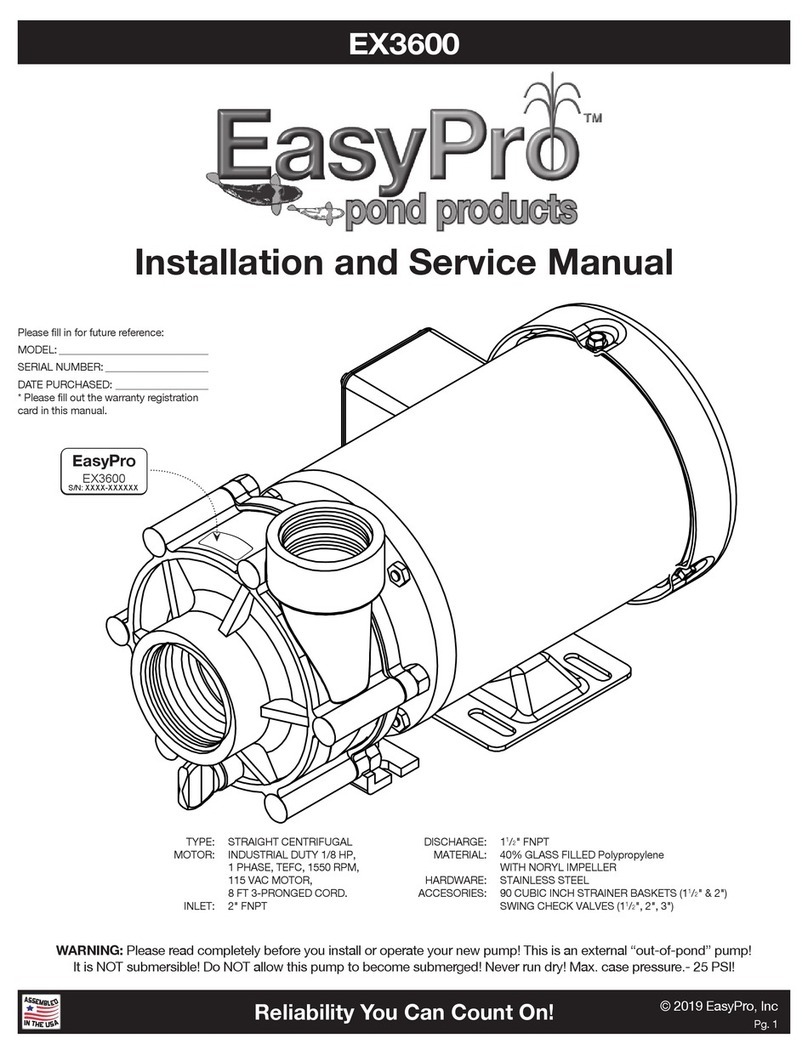
EasyPro
EasyPro EX3600 Installation and service manual

KIRLOSKAR
KIRLOSKAR IN 40/160 IL Instructions on Installation, Operation and Maintenance Manual

Cal Pump
Cal Pump Torpedo General instructions

Server
Server Express 07745 manual

ITT
ITT Engineered Valves 903 Installation, operation and maintenance manual

VUOTOTECNICA
VUOTOTECNICA VTS 25FG OPERATION AND MAINTENANCE BOOK
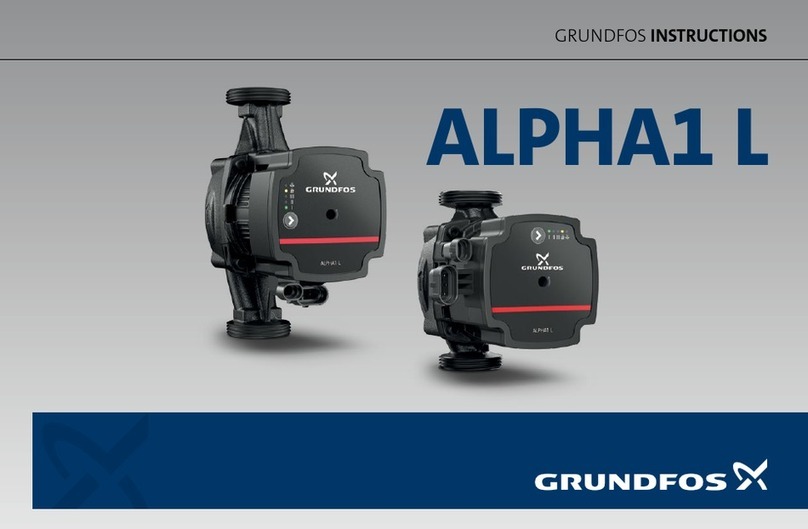
Grundfos
Grundfos ALPHA1 L instructions

poolstar
poolstar SPAWER POOLEX O'SPA 30 Installation and user manual
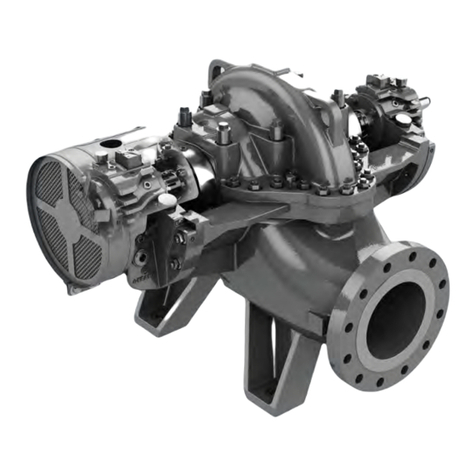
ITT
ITT 3610 i-FRAME manual
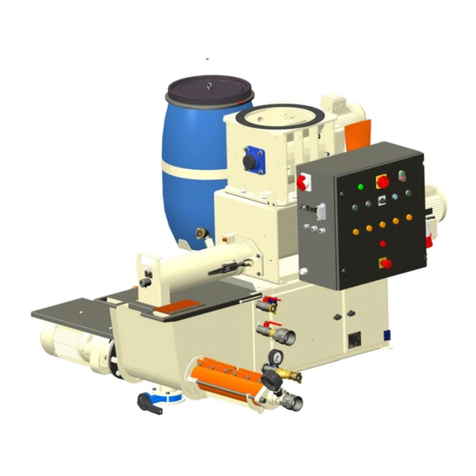
PFT
PFT FERRO 100 II operating manual
